Have you ever tried riding a skateboard? Learning steadiness on a skateboard is a challenging part of learning to ride.
Skateboarding takes practice and patience but some tricks help you progress your overall balance and get the correct gear.
Table of Contents
Before You Go Skating
Help to train your brain
Understanding how the body works is the first step. The inner ear primarily controls body balance. An “inner container” of the ear contains a fluid called endolymph, which is located inside the inner ear.
Whenever we perform a turn or a trick on our skateboards, a sudden movement is involved. Our bodies will continue turning, and the endolymph will continue to flow.
These two different kinds of information will go to our nervous system. This can give us a feeling of being off-balance. Constant practice is key to training our brains.
Work out what your favored posture is
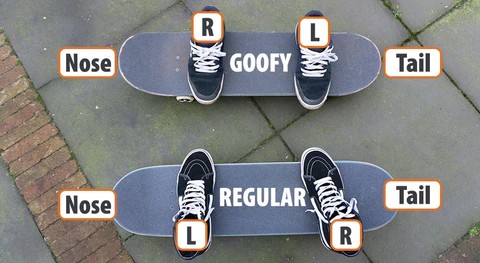
Maintaining deck balance requires a preferred position. Skaters typically use two positions: goofy and regular. Experiment with each type to determine which one is most comfortable and natural for you.
To practice balance, use a skateboard that is still
Try balancing on the skateboard while standing before you try it while riding. Placing the skateboard on a carpet or on grass is the easiest way to stop it from moving too much. Get on it and try to improve your balance.
Step 1. Choose your stance as the first step
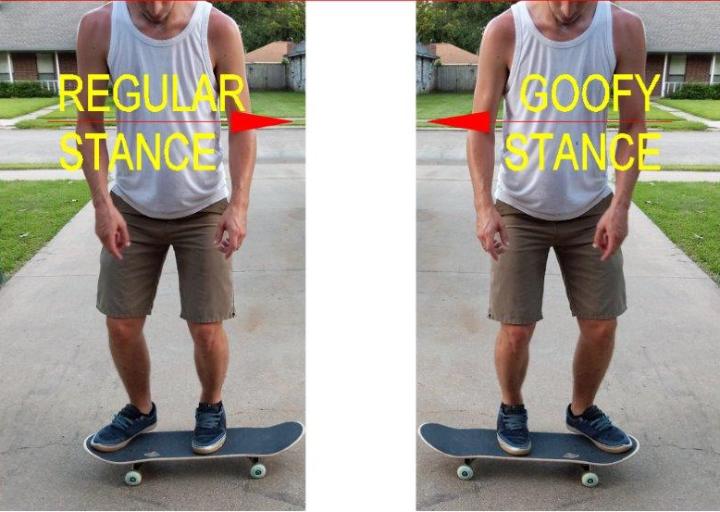
Decide which position you prefer. Choosing the right stance is crucial to staying balanced on a skateboard. Skateboarders usually use either goofy or regular positions.
Experiment with each type to see which suits you best. You face right or left foot forward in a “regular” position. The “goofy” position is when you are facing left with your right foot forward.
Step 2: Put your feet at the back of the bolts
When standing on the board, position your feet just at the back of the bolts. This will allow you to maintain a good balance.
It is not as easy to control the board if your feet are in their center and are also more likely to break.
You should position your feet just in the rear near the bolts that are holding your skateboard’s wheels on the board.
Step 3: Make sure the surface is appropriate
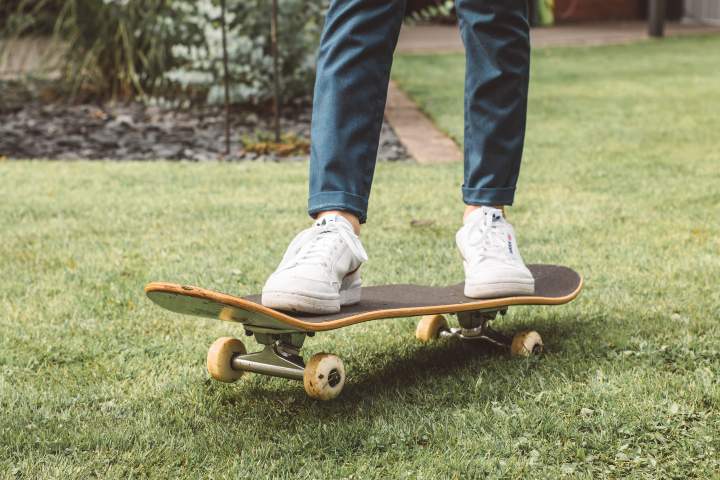
Start by standing still on the board and practice your balance before you do it while riding.
Placing your skateboard on carpet or grass will keep it from moving around so much. Then, practice your balancing with your skateboard.
For the wheels on your skateboard, you can put something in front and behind the wheels to keep them from moving about.
You can position your skateboard between two items that are heavy or place a brick on either side. This will help balance the deck and stop it moving around.
Step 4: Put your weight on your toes instead of your heels
As you turn the board, use your toes and heels. Turning the board is something you can practice as you ride. You can easily turn the board by moving your body weight from one side to the other.
For example, if you move your weight to your heels, then the board will shift to the right or left, depending on which direction you have your heels facing. Your board will turn in the direction in which you change your weight to your toes.
Working Your Balance When the Board Is Moving
How to keep balance when riding
Step 1: Don’t give up
The more stable you are, the more you will be able to keep going. Place your foot on a board to begin. Your other foot cant be out of the board, it needs to be positioned up front of your first foot.
As you push yourself forward, the rest of your body will follow. To maintain a low midpoint of gravity, keep your knees slightly bent.
Step 2: Your feet on the skateboard
When your board can be maneuvered, your foot can be put back on the deck. Once again, your foot should be behind the bolt.
Putting the foot sideways should give you enough room on your board. This will allow you to move backward and forward without exerting much pressure.
Step 3: Hold on while it’s moving
Knowing how to control your board will allow you to stay on it as long as it is moving. The balance can be kept while moving because it will eventually slow down.
Your board will come to a halt after a short amount of time if you’re riding on a concrete surface. However, your board will continue moving due to inclines.
For beginners, flat surfaces are recommended. Sometimes, the tendency can cause you to lose control and become unstable. It is essential to know how to stop if you are going downhill.
Step 4: Keeping control over your toes and heels
Your board needs to be turned around the corner. Once you practice well, it shows some stability.
Steering the board requires shifting your weight and heel. As you turn the board, it will follow the way that your heels are fronting.
You can also move the board in a particular direction by putting your weight on your toes.
Equipment to Protect Your Body
Equipment for protection
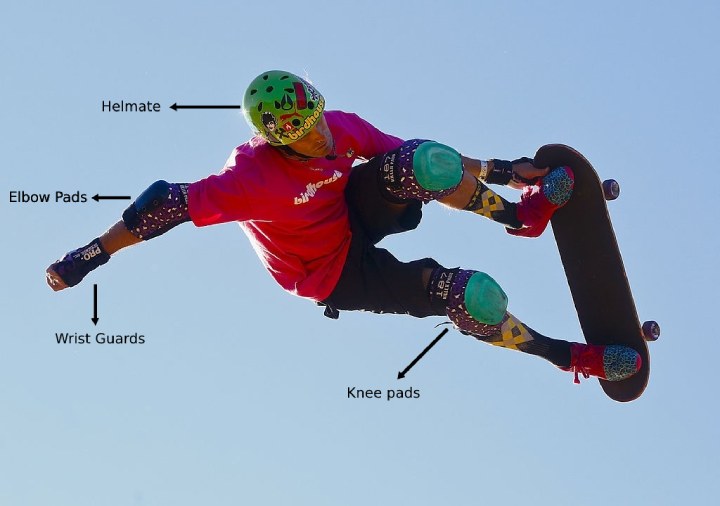
Helmets and padding should be worn. Wearing the right gear is necessary to protect yourself while skateboarding, which can be dangerous. If you are skateboarding, you should wear a helmet, elbow pads, and wrist guards.
When first learning how to skateboard, you are likely to fall, so these special items can protect you from injury.
The right shoes for skateboarding
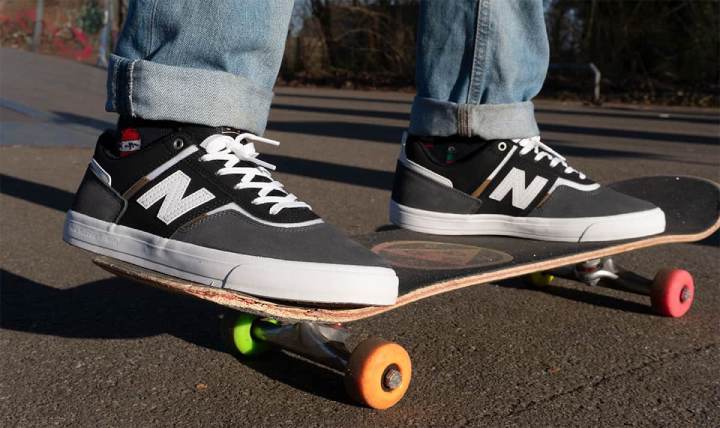
Put on skate shoes. Skate shoes support you to stay on your board, but you can skate in sneakers too.
Unlike regular sneakers, skate shoes have wider soles, so more contact is made with the skateboard.
Keeping your balance might be made easier by the width of the skate shoes. Many sporting goods and specialty stores sell skate shoes.
Choose a skateboard
Without the right board, you cannot use your skating skills. For novices, it is best to practice on a beginner skateboard.
You can find skateboards everywhere, so no matter what you’re looking for, you can find it. An excellent choice and good value for money require effort and consideration.
If you are purchasing a skateboard, you can speak with someone who has experience with the product and ask them any questions you might have. Only then can you make a final decision.
A skateboarder’s guide to balance
Keeping your balance while standing on your deck
The focused point for your weight needs to be the front foot/lead leg
Move your weight to improve your balance. Working on your balance does not require much movement or leaning back and forth.
You just need to keep the bodyweight in the middle then move the weight from the heels to the toes to remain stable on the deck. It is also a good idea to keep your knees slightly bent.
Maintaining a low position of gravity will make it easier to balance because your center of gravity will be lower.
Position of the feet is of utmost importance
How you turn on your skateboard depends on how your feet are positioned. This affects your balance as well.
Doing anything wrong might result in a loss of balance and inability to turn. When that happens, skating will feel unnatural, uncomfortable, and difficult.
Foot placement when pushing
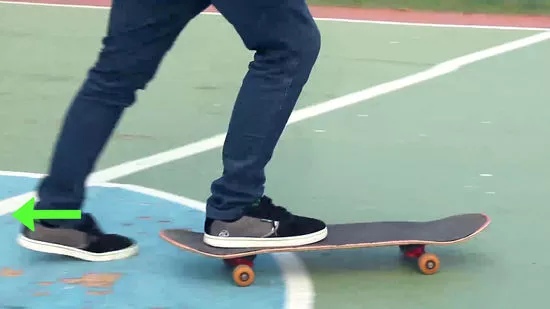
The lead leg (front leg) should be facing the nose (or forward) and over the centerline of the deck.
Being over the centerline, it should balance easily. Your foot tends to turn the board left or right when it’s off the centerline. It will feel awkward to push when it’s off the centerline.
Foot positioning when standing on the deck
The feet should be 50°-90° off the center of the board. The centerline is the line that runs from the nose to the tail of the board.
In order to properly position your foot, the middle of your foot should be across the centerline of the board, with your toe touching the rail on one side and your heel touching the other. This allows you to turn effectively and balance properly.
Standing on your deck for optimum balance
A skateboarder’s position is very important. Start out with your feet a little farther apart than shoulder-width. Your board’s length can affect how far apart you should be.
The front mounting bolts or just a little behind them are where your foot should be.
Standing closer to the front of a longer board would be ideal. Your feet should be between the mounting bolts.
Learning to push properly
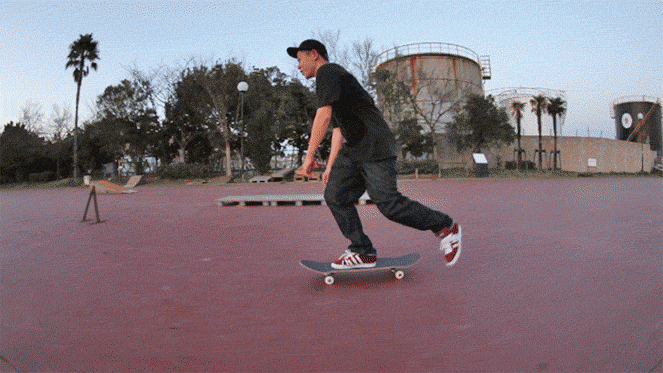
Your back leg should be used when pushing. A mongo push is when you push using your front leg.
For some people, this is natural, but it is not good. When pushing this way, you get bad balance. The back leg should push and the front leg should remain on deck.
As you keep your weight balanced and centered over your front foot, you should maintain your weight over your middle foot.
The front leg should be positioned straight on the deck as described in the foot positioning section. Put most of your weight on the deck leg. So you can push with the pushing leg.
Getting your legs into the right positions is important when getting back on board. In order to begin, place your back foot between 50° and 90°.
Your front leg should now be angled 50°-90° as well. While shifting your leg, you should add weight to your back for a short moment.
As long as you have your back foot balanced well, you shouldn’t have any problems. It’s best if the motion is smooth, but if it’s not, it’s fine. Remain relaxed.
Slowing down
Carving is an option
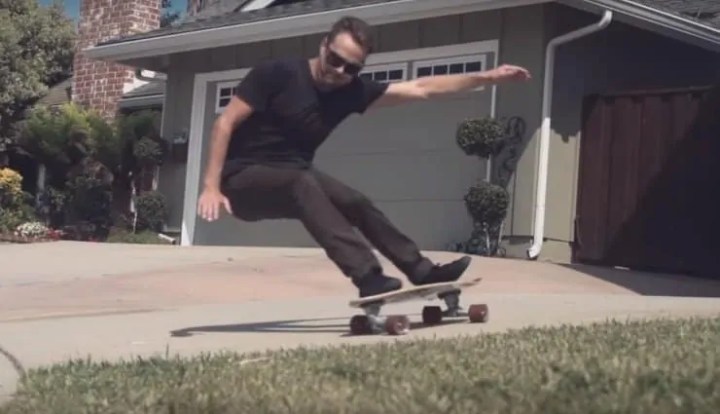
You take a deep left turn during carving and then a deep right turn. As a result, your board travels farther and slower, causing you to lose some speed. This may be challenging for some beginners. If you want to turn, either push down on your heels or your toes in that direction. For a deeper turn, bend in that direction.
Although carving is useful for reducing speed, it won’t slow you down completely.
Stopping completely will require you to either jump off your skateboard or use a foot brake. It is not advisable to jump off your board.
Skills That You Can Cross-Train With Balance Training Tools
Tree Pose
- Hold your hands outstretched, feet together, spine tall. The BOSU can be used or folded towel, either way
- Your left foot should be placed on the side of your calf while you balance
- Make the tree branches by slowly lifting your arms overhead. You can switch legs after 30 seconds
Lunges
- Place your feet close together on top of the BOSU’s ball side
- Bend your right knee. Stretch the left leg backward until they it’s parallel to the ground.
- Then, extend straight up from the bottom of the BOSU with your right leg. Change legs. Lunge 8-10 times for each leg
FAQs
1. What to do if my skateboard turns on its own?
Ans. Your trucks may need to be re-aligned by adjusting the nuts. Make sure they are about the same tightness. They may need to be tightened or loosened. See if there is a difference when you skate again, although this may take some time.
2. What to do if my deck turns too much?
Ans. With your skateboard, you might be experiencing a constant turn or a lean left or right. It is either the hardware or bushings in the trucks that need to be looked at. The bushings are the rounded plastic pieces located in the trucks and go down in the direction that you are going.

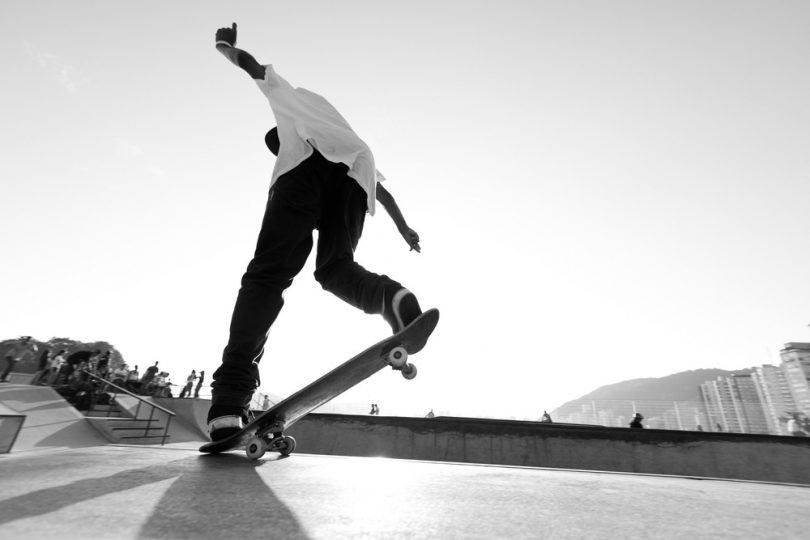
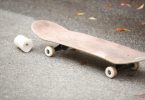
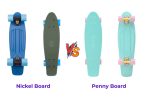
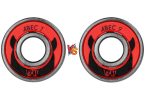
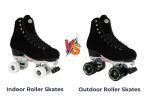
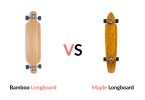
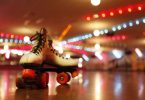

Leave a Comment